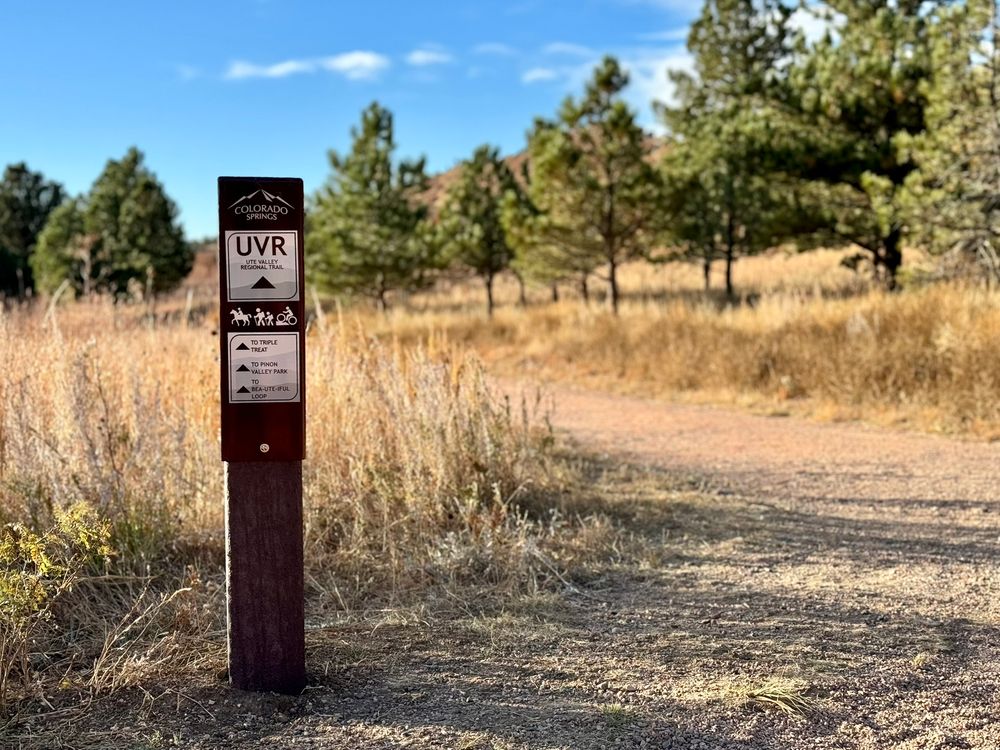Leave No Trace
Travel on Durable Surfaces
Ute Valley Park, a stunning natural haven, beckons outdoor enthusiasts with its diverse recreational activities. From hiking and biking to wildlife watching, this park has something for everyone. However, we must remember that this fragile ecosystem demands our utmost care and respect.

Our goal when visiting Ute Valley Park should be to leave it in the same condition as we found it, if not better. Unfortunately, our footsteps and activities can sometimes cause harm to the land, flora, and fauna. That’s where traveling on durable surfaces comes in - these surfaces can withstand or recover from the impact of our visit.
What exactly are durable surfaces?
Durable surfaces are those that can handle repeated trampling and scuffing without compromising their structure or function. In Ute Valley Park, you’ll find several types of durable surfaces:
- Well-established trails
- Rock, gravel and sand
- Snow and ice
- Water
The importance of traveling on durable surfaces
By sticking to durable surfaces, you’re actively contributing to:
- Preventing soil erosion and compaction
- Safeguarding vegetation and animal habitats
- Curbing the spread of invasive species and diseases
- Preserving the park’s natural beauty and diversity
- Avoiding the creation of new trails that can fragment the wilderness
- Minimizing the need for trail maintenance and restoration
Strategies for traveling on durable surfaces in Ute Valley Park
Stay on trail.
Venturing off-trail is strictly prohibited in Ute Valley Park. Always stay on designated trails, which are indicated by official park signage and well-maintained paths. These trails have been carefully designed to provide a safe and enjoyable experience while protecting the natural environment. Avoid cutting switchbacks or creating shortcuts, and always follow signs to ensure you remain on approved routes.
Choose the right trail.
Ute Valley Park offers trails suitable for various users, including hikers, bikers, and equestrians. Choose a trail that aligns with your activity and skill level, and adhere to the signs and rules specific to each trail. By doing so, you’ll help reduce conflicts and accidents among users while minimizing excessive wear and tear on the trails.
Walk through mud and snow.
When trails are wet or snowy, walk through the center of the trail, even if it’s muddy. This practice helps keep the trail narrow and prevents widening and braiding. Avoid walking around puddles or snow patches, as this can damage vegetation and lead to the creation of new trails. If the trails are excessively muddy or snowy, consider postponing your visit or opting for another trail.
Camp elsewhere.
Ute Valley Park does not allow camping within its boundaries. Camping is illegal and can lead to fire hazards, littering, and wildlife conflicts. If you wish to camp, please find a legal and suitable campsite outside the park.
Embrace Responsible Outdoor Ethics
By adhering to these guidelines, you can fully immerse yourself in the beauty of Ute Valley Park while simultaneously respecting and protecting its natural environment. Remember, the essence of being outdoors lies in moving through natural areas without causing damage to the land, foliage, or waterways. Strive to leave no trace of your visit, and, if possible, leave the place even better than you found it.
So, the next time you visit Ute Valley Park, keep these tips in mind. By being a responsible park visitor, you’re not only ensuring a memorable experience for yourself but also preserving the park’s pristine beauty for generations to come. Let’s work together to maintain the integrity of this incredible natural treasure!